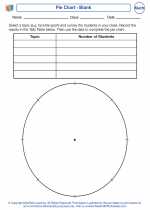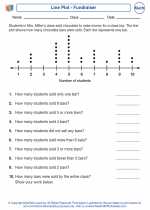Volume
Volume is a measure of the amount of space occupied by a three-dimensional object. It is the capacity of a container or the total amount of space that an object occupies. Volume is typically measured in cubic units, such as cubic centimeters (cm³) or cubic meters (m³).Formulas for Calculating Volume
The formula for calculating the volume of different geometric shapes are as follows:1. Rectangular Prism: The volume (V) of a rectangular prism is calculated using the formula V = length × width × height.2. Cube: The volume (V) of a cube is calculated using the formula V = side × side × side (or V = side³).3. Cylinder: The volume (V) of a cylinder is calculated using the formula V = π × radius² × height, where π is a constant (approximately 3.14159).4. Sphere: The volume (V) of a sphere is calculated using the formula V = (4/3) × π × radius³.5. Cone: The volume (V) of a cone is calculated using the formula V = (1/3) × π × radius² × height.Units of Volume
Volume is typically measured in cubic units, which are derived from the linear units of measurement. For example, if length is measured in meters, the volume will be in cubic meters. Some common units of volume include cubic centimeters (cm³), cubic meters (m³), and liters (L).Real-World Applications
Understanding volume is important in various real-world scenarios, such as calculating the amount of liquid that can be held in a container, determining the capacity of a swimming pool, or estimating the space needed for storing items in a warehouse.Study Guide
.◂Math Worksheets and Study Guides Fourth Grade. Tables and Graphs
Study Guide Tables and Graphs
Tables and Graphs  Activity Lesson
Activity Lesson Pie Chart - Blank
Pie Chart - Blank  Activity Lesson
Activity Lesson Classroom Chaos
Classroom Chaos  Activity Lesson
Activity Lesson Mary`s Many Movements
Mary`s Many Movements  Worksheet/Answer key
Worksheet/Answer key Tables and Graphs
Tables and Graphs  Worksheet/Answer key
Worksheet/Answer key Tables and Graphs
Tables and Graphs  Worksheet/Answer key
Worksheet/Answer key Tables and Graphs
Tables and Graphs  Worksheet/Answer key
Worksheet/Answer key Tables and Graphs
Tables and Graphs  Worksheet/Answer key
Worksheet/Answer key Tables and Graphs
Tables and Graphs  Worksheet/Answer key
Worksheet/Answer key Tables and Graphs
Tables and Graphs  Worksheet/Answer key
Worksheet/Answer key Student Pictograph
Student Pictograph  Worksheet/Answer key
Worksheet/Answer key Line Plot - Fundraiser
Line Plot - Fundraiser  Worksheet/Answer key
Worksheet/Answer key Pie Chart - After-School Activities
Pie Chart - After-School Activities 

 Activity Lesson
Activity Lesson
 Activity Lesson
Activity Lesson
 Activity Lesson
Activity Lesson
 Worksheet/Answer key
Worksheet/Answer key
 Worksheet/Answer key
Worksheet/Answer key
 Worksheet/Answer key
Worksheet/Answer key
 Worksheet/Answer key
Worksheet/Answer key
 Worksheet/Answer key
Worksheet/Answer key
 Worksheet/Answer key
Worksheet/Answer key
 Worksheet/Answer key
Worksheet/Answer key
 Worksheet/Answer key
Worksheet/Answer key
 Worksheet/Answer key
Worksheet/Answer key

The resources above cover the following skills:
DATA ANALYSIS
Interpret data displayed in a circle graph.